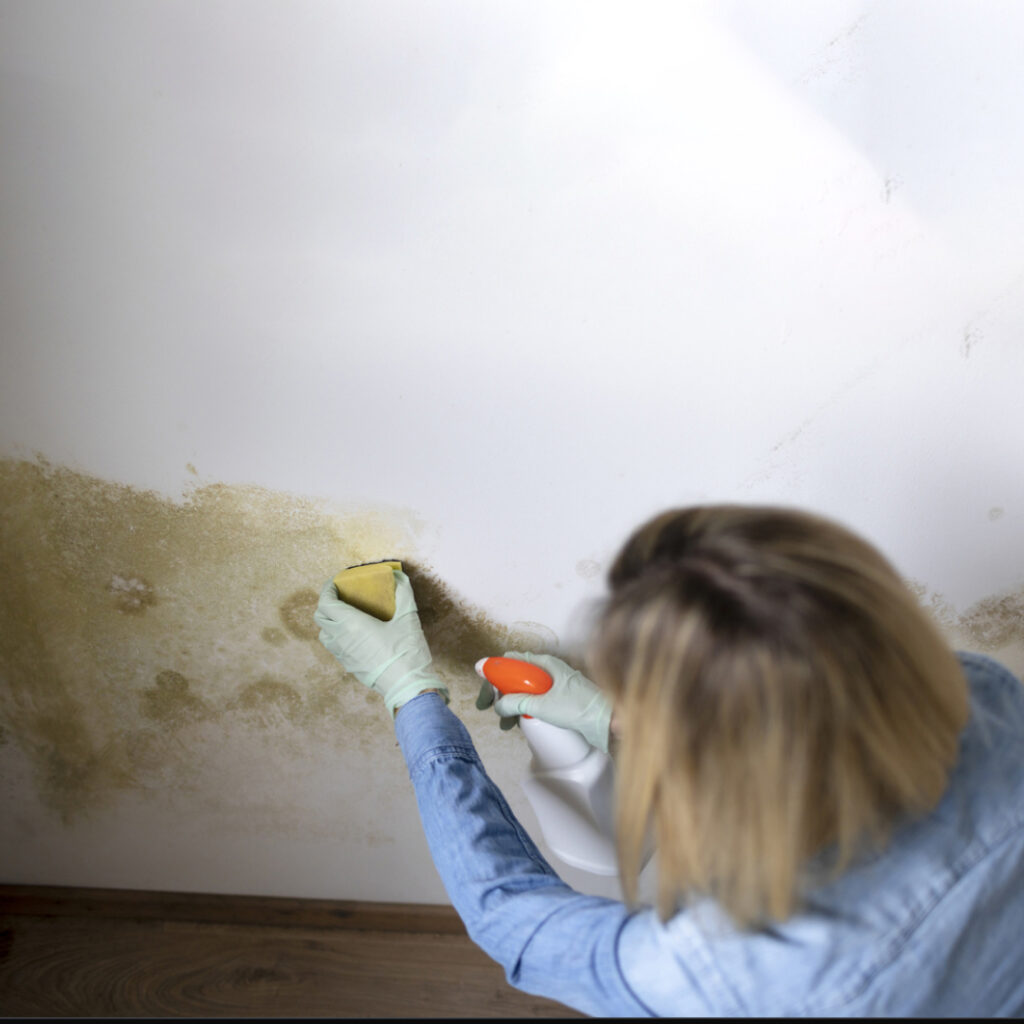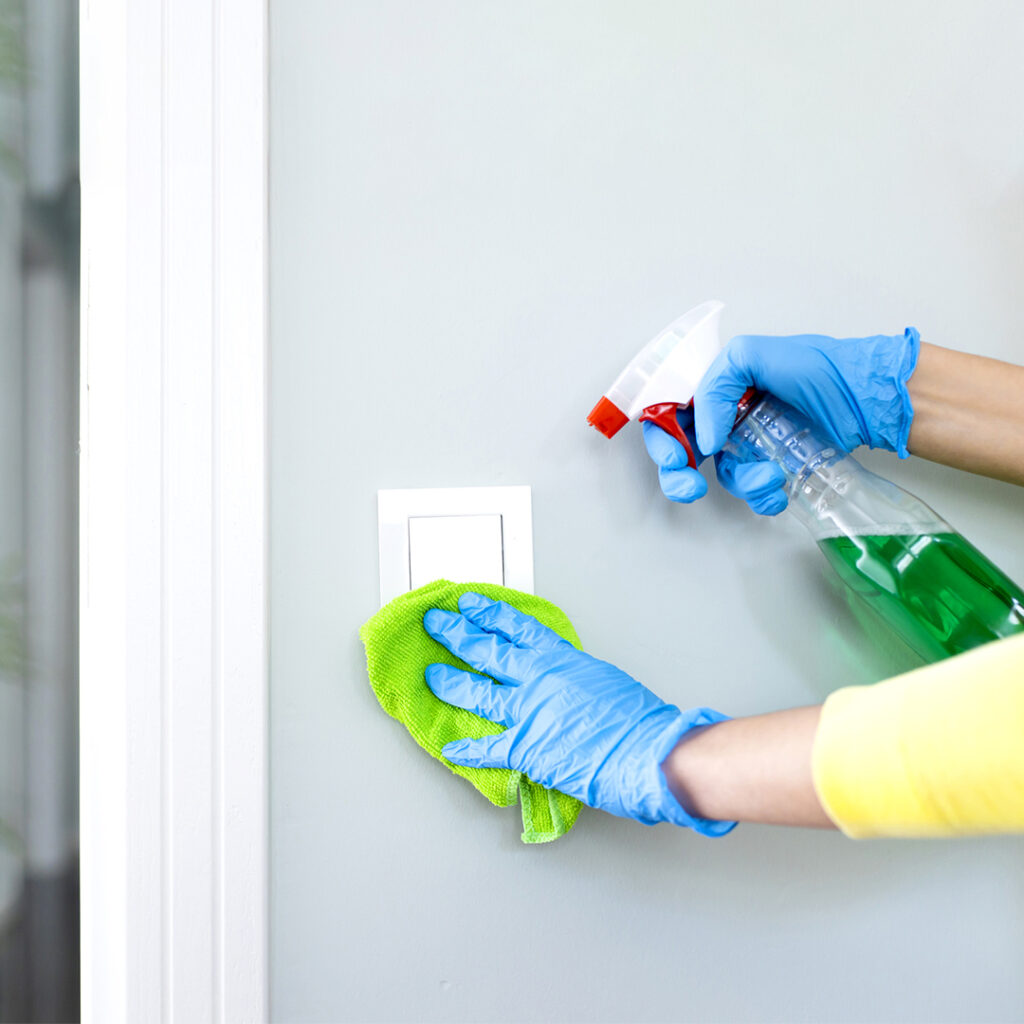
What if your walls could do more than just look pretty? What if they could actively protect you and your loved ones? Enter the world of antimicrobial paint, where aesthetics meet science in a vibrant dance of health and hygiene.
In this blog, we’ll peel back the layers of ordinary paint to reveal the extraordinary powers of antimicrobial coatings. From reducing the spread of illnesses to improving indoor air quality, we’ll explore how this innovative paint can transform your living space into a sanctuary of well-being.
The Magic of Antimicrobial Paint

In the world of interior design, where aesthetics often steal the spotlight, antimicrobial paint quietly takes centre stage. But what makes it so special, and how does it work its magic?
The Antimicrobial Paint Formula: Antimicrobial paint is not your standard wall covering. It’s infused with a special antimicrobial paint additive that actively fights against microorganisms. These additives, often based on silver or copper ions, disrupt the
growth and reproduction of bacteria, viruses, and fungi on painted surfaces.
Continuous Protection: Unlike conventional disinfectants that have a limited lifespan, antimicrobial paint offers continuous protection. Once applied, it forms an invisible barrier on the painted surface, inhibiting the growth of microbes. This means your walls don’t just look clean; they stay clean over time.
Ideal for High-Traffic Areas: Antimicrobial paint finds its true calling in places with high foot traffic, like hospitals, schools, and offices. In these environments, where germs can easily spread, it acts as a silent guardian, reducing the risk of infections.
Health Boosting Benefits

Antimicrobial paint may sound like something out of a science fiction novel, but its health benefits are very real. we’ll dive deeper into the tangible advantages it offers:
Reduced Infection Risk: One of the most significant benefits of antimicrobial paint is its ability to reduce the risk of infections. In healthcare settings, where patients’ health is paramount, this paint plays a crucial role in minimizing the spread of harmful microorganisms.
Healthier Living Environments: Beyond hospitals, antimicrobial paint contributes to healthier living environments. In homes and schools, where children and families spend significant time, it provides an added layer of protection against common illnesses.
A Blessing for Allergy Sufferers: For those who battle allergies or respiratory issues, antimicrobial paint is a game-changer. Reducing mold, mildew, and dust mites on surfaces, helps individuals breathe easier and live more comfortably.
Enhanced Hygiene: Maintaining cleanliness becomes more manageable with antimicrobial paint. Surfaces coated with it are less prone to microbial growth, making them easier to clean and sanitize.
Antimicrobial Paint in Action

Antimicrobial paint isn’t just a theoretical concept; it’s making a real impact in various settings. Let’s take a closer look at how this innovative paint is actively improving the environments where we live and work:
Healthcare Spaces: In hospitals and healthcare facilities, antimicrobial paint is a lifesaver, quite literally. It reduces the risk of healthcare-associated infections, making these spaces safer for patients and healthcare professionals.
Educational Institutions: Schools and universities are bustling with activity and often face the challenge of maintaining hygiene. Antimicrobial paint not only keeps classrooms cleaner but also creates a healthier learning environment for students.
Residential Bliss: Imagine a home where you not only feel comfortable but also protected from common allergens and microbes.
Office Environments: Offices are where many of us spend a significant portion of our lives. Antimicrobial paint ensures that your workspace contributes positively to your well-being.
How to Choose and Use Antimicrobial Paint
When it comes to harnessing the full benefits of antimicrobial paint, choosing the right product and applying it correctly are essential steps. In this section, we’ll delve into the practical details that will empower you to make informed decisions and use antimicrobial paint effectively.
Selecting the Appropriate Paint:
Selecting the right antimicrobial paint involves several crucial considerations:
1. Surface Compatibility: Different antimicrobial paint formulations are designed for specific surfaces. Consider the surface you intend to paint, whether it’s walls, ceilings, or frequently touched areas, and choose a paint that’s compatible.
2. Protection Levels: Assess the level of antimicrobial protection required for your environment. Healthcare facilities may need higher levels of protection compared to a residential setting. Understanding your needs is essential.
3. Aesthetics Matter: While antimicrobial functionality is paramount, aesthetics also play a role. Antimicrobial paints come in various colours and finishes, allowing you to align protection with visual appeal.

Mastering the Application Process:
Applying antimicrobial paint correctly is crucial for its effectiveness:
1. Surface Preparation: Properly prepare the surfaces you plan to paint. This includes cleaning, smoothing, and priming the surfaces to ensure the antimicrobial coating adheres effectively.
2. Application Techniques: Utilize the right tools and techniques for applying antimicrobial paint. The proper application ensures an even coat and maximum antimicrobial protection.
3. Timing Matters: Be mindful of curing times. Allow the paint to dry and cure as per the manufacturer’s recommendations. This step is essential to activate the antimicrobial properties fully.
Maintenance for Sustained Protection:
Maintaining antimicrobial protection is an ongoing process:
1. Effective Cleaning: Regularly clean painted surfaces to remove dirt and contaminants. This helps preserve the antimicrobial properties and ensures continued protection.
2. Strategic Touch-Ups: Periodically assess the condition of painted surfaces, especially in high-traffic areas. Touch up any areas showing wear or damage to maintain consistent protection.
Prioritizing Safety:
Safety is paramount during the entire process:
1. Protective Gear: When applying antimicrobial paint, use the appropriate protective gear, including gloves and masks, to ensure your safety.
2. Ventilation: Adequate ventilation is crucial to disperse fumes and maintain a safe environment during and after application. Proper airflow is essential.
Success Stories and Case Studies
Let’s dive into the real-world impact of antimicrobial paint by exploring success stories and case studies that highlight its effectiveness:
Hospital Transformations: We’ll share stories from hospitals and healthcare facilities where the implementation of antimicrobial paint has led to a significant reduction in healthcare-associated infections. These success stories demonstrate how this paint plays a crucial role in creating safer patient environments.
Allergen-Free Homes: For individuals and families dealing with allergies or respiratory issues, we’ll showcase homes that have been transformed by antimicrobial paint. We’ll hear from homeowners who have experienced the benefits firsthand, sharing how it has improved their quality of life.
Educational Excellence: In educational institutions, antimicrobial paint isn’t just about aesthetics; it’s about creating a healthy learning environment. We’ll delve into case studies from schools and universities that have witnessed improved student health and well-being after adopting antimicrobial paint.
Office Productivity: Offices that invest in employee well-being often see increased productivity. We’ll explore case studies of companies that have implemented antimicrobial paint to reduce sick days and create a more productive work atmosphere.
Antimicrobial Paints Market, Companies, and Market Size

In the dynamic landscape of antimicrobial paints, we find a convergence of innovation, industry players, and market growth. Let’s explore these facets in a holistic view:
Market Dynamics:
The antimicrobial paints market is experiencing a remarkable surge, aligning with the heightened emphasis on health and hygiene. This market growth is a direct response to the increasing awareness of the importance of cleaner, safer living and working spaces.
Diverse Applications:
Antimicrobial paints aren’t confined to a single sector. They find versatile applications across healthcare, education, commercial spaces, and homes. Hospitals, schools, offices, and residences all benefit from the protective properties of antimicrobial paints.
Customized Offerings:
In the realm of antimicrobial coatings, customization is key. Many companies provide tailored solutions to address specific needs. Whether it’s a hospital seeking maximum protection or a homeowner aiming for a healthier living space, these companies offer coatings that align with unique requirements.
Global Impact:
The influence of antimicrobial coating companies extends far and wide. They operate on a global scale, ensuring that the advantages of their products reach diverse settings and transcend geographical boundaries.
Market Size Insights:
The market size of antimicrobial coatings speaks volumes about the significance of this industry. It reflects the growing demand for products that actively reduce microbial threats and create safer environments.
Revenue Growth:
As the demand for antimicrobial coatings escalates, the industry’s revenue grows in tandem. This financial expansion underscores the economic value of prioritizing cleanliness and safety in our surroundings.
Future Outlook:
Projections indicate that the antimicrobial coatings market will continue its upward trajectory. With ongoing research and development, the market is well-positioned to meet evolving needs for healthier environments.
Conclusion
In the realm of design, antimicrobial paint isn’t just colour; it’s a shield of health. As we conclude, remember this: it’s not a trend, but a transformative tool. Antimicrobial paint offers a safer, cleaner future. So, as you pick up that paintbrush, choose more than just aesthetics; choose health, choose cleanliness, choose antimicrobial paint.
Paint a safer world, one stroke at a time.
What is antimicrobial paint?
Antimicrobial paint is a type of paint that contains additives or coatings designed to inhibit the growth and spread of bacteria, fungi, mould, and other microorganisms on painted surfaces.
How does antimicrobial paint work?
Antimicrobial paint works by incorporating special additives, such as silver ions or organic compounds, that disrupt the growth and reproduction of microorganisms on painted surfaces. This helps reduce the spread of germs and pathogens.
Where can antimicrobial paint be used?
Antimicrobial paint can be used in various settings, including homes, hospitals, schools, offices, restaurants, and public spaces. It's particularly beneficial in areas where hygiene and cleanliness are essential.
What are the health benefits of antimicrobial paint?
Antimicrobial paint can help reduce the risk of infections, allergies, and respiratory issues by inhibiting the growth of harmful microorganisms. It creates a healthier living and working environment.
Are there different types of antimicrobial paint?
Yes, there are various types of antimicrobial paint, each designed for specific surfaces and levels of protection. Some are suitable for walls, while others are ideal for high-touch surfaces or healthcare settings.

